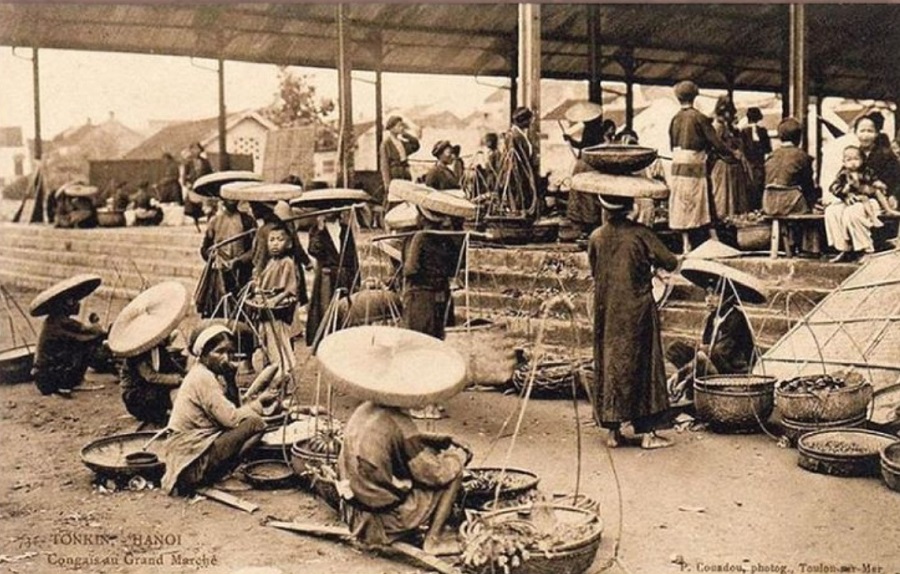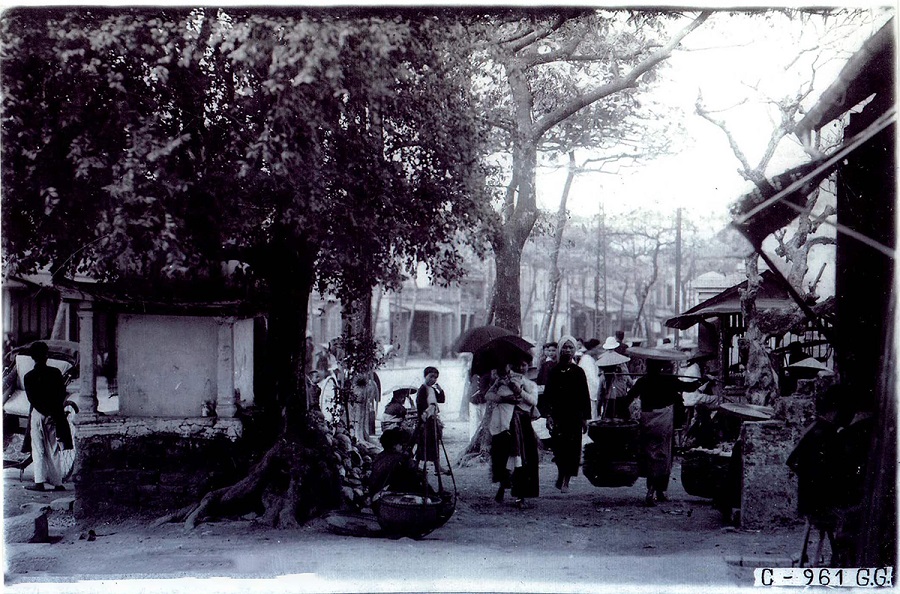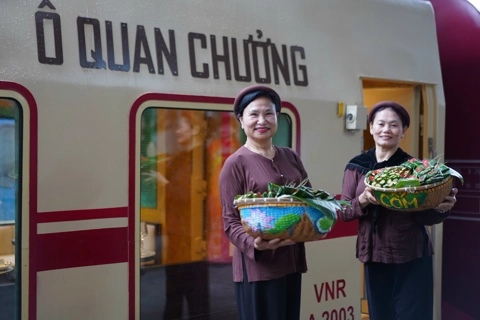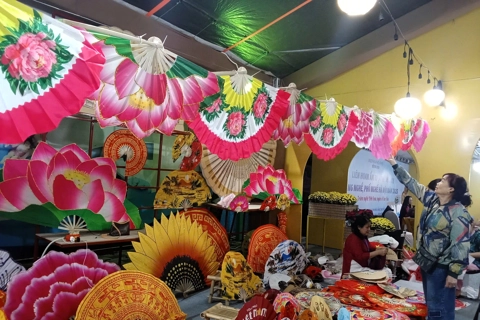“Memory of ancient markets” exhibition reenacts ancient Hanoi
The virtual exhibition describes how the markets in Hanoi were formed and tells the visitors their interesting historical stories.
The photo exhibition titled “Memory of ancient markets” is underway online at the website and Facebook profile of the National Archives Center I in the capital city's Cau Giay District.
| An ancient market inside Thang Long Citadel in the 18th century. Photos: National Archives Center I |
The exhibition features some 80 administrative documents, maps, and materials related to ancient markets in Hanoi, including Dong Xuan, Buoi (Pomelo) and Bach Ma markets or the Tet flower market on Hang Luoc street, as well as the vivid photos of traditional markets and street vendors in the capital city from the 19th century to the early 20th century.
The exhibition consists of two parts. The first part titled “The story of planning” features documents and pictures related to the planning of markets in ancient Thang Long Citadel.
Under the Nguyen Dynasty (1802-1945), the old markets in Hanoi were always associated with craft villages and trading guilds. Related documents show that the markets were closely monitored by the Nguyen court. Quite a few documents related to tax or goods circulation management used to be issued at that time.
| The bustling Dong Xuan Market in the old days. |
Later on, under the French colonial rule in the late 18th and early 19th centuries, the ‘real’ markets with roofed stalls were built in Hanoi’s downtown.
The French also began re-planing the market, wiping out small markets and gathering traders in larger and more convenient ones such as the Dong Xuan Market, which was built in the heart of Hanoi’s Old Quarter area to group merchants from nearby smaller markets.
The second part of the exhibition, “Ancient memories”, features photos of makeshift markets and street vendors in ancient Hanoi. These old-fashioned-style markets survived the French colonial period and still exist today in the capital city.
According to Thao Vu, a viewer of the virtual exhibition, the highlight of the exhibition is the photos of the Dong Xuan market.
Since it was invented, Hanoi markets have always played an indispensable role in the development of the capital city. |
Built in 1804, the Dong Xuan market is also one of the oldest markets that still remains today. It is also a historical site that witnessed the fierce battle between Vietnam's resistance force and the French troops during the French war from 1945 to 1954 in Hanoi.
“Dong Xuan is not only a “must-visit” destination for visitors to Hanoi but also a convenient shopping place where you can find anything from fresh food, and beer to home appliances,” Vu told The Hanoi Times.
Indeed, the exhibition shows that the ancient capital Thang Long or Hanoi today is a major economic-cultural center of the country and the market plays an indispensable role in the development of the city.
Hanoi markets have been changing a lot over time. Local markets, however, always play an important role in the social life of the residents. They have become a special cultural trait that helps draw the attraction of visitors to the funky capital of Vietnam.
The virtual exhibition is available at https://archives.org.vn/chohanoixua/tour/tour.html/ or https://www.facebook.com/luut ruquocgia1


.jpg)











